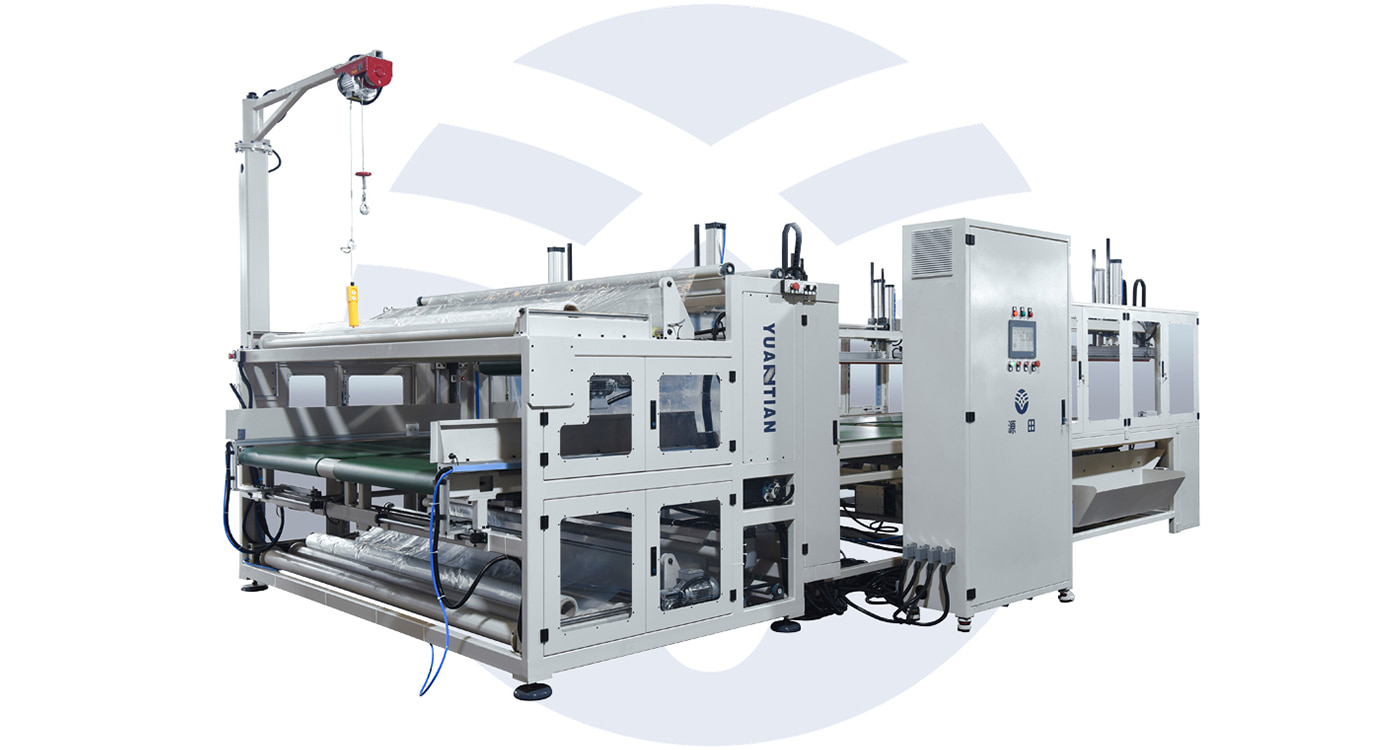
Quilting sewing machines and mattress sewing machines are two essential tools for those in the textile and bedding industries. Both types of machines serve the purpose of sewing together multiple layers of fabric to create a finished product, but each has its own specific uses and features. In this blog post, we’ll explore the differences between quilting sewing machines and mattress sewing machines, and discuss some of the top options on the market for each.
Quilting sewing machines are designed for making quilts, bedspreads, and other decorative textiles. These machines typically feature a wide workspace for accommodating larger pieces of fabric, and a variety of stitch patterns for creative quilting designs. Some quilting sewing machines also have specialized features, such as automatic needle threaders and drop feed dogs, that make the quilting process even easier. Mattress sewing machines, on the other hand, are specifically designed for making mattresses. These machines typically have a much larger workspace than quilting sewing machines, and are capable of sewing multiple layers of fabric and foam at once. They also typically feature heavy-duty motors and larger needles, which allow them to handle the thick, dense materials used in mattress production.
When it comes to choosing a quilting sewing machine or mattress sewing machine, there are a number of factors to consider. For quilting sewing machines, you’ll want to look for features such as a wide workspace, a variety of stitch patterns, and ease of use. For mattress sewing machines, you’ll want to look for a machine with a large workspace, heavy-duty construction, and the ability to handle thick materials. Some of the top quilting sewing machines on the market include the Janome Horizon Memory Craft 8900QCP, the Singer Legacy SE300, and the Brother PQ1500SL. These machines offer a variety of features, from advanced stitch patterns to automatic needle threaders, and are known for their high-quality performance and ease of use.
Difference Between Quilting Machines And Sewing Machines
Quilting machines and sewing machines both serve the purpose of stitching together multiple layers of fabric to create a finished product, but there are a few key differences between the two. Sewing machines are versatile tools that can be used for a variety of sewing projects, from clothing and accessories to home décor. They typically have a smaller workspace and a limited number of stitch patterns compared to quilting machines. Quilting machines, on the other hand, are designed specifically for quilting and other decorative sewing projects. They often have a larger workspace and a wider variety of stitch patterns, making them ideal for quilting intricate designs. Some quilting machines also have specialized features, such as automatic needle threaders and drop feed dogs, that make the quilting process easier.
Another key difference between quilting machines and sewing machines is the size of the needle. Quilting machines typically have a larger needle, which allows them to handle multiple layers of fabric and batting with ease. In contrast, sewing machines have smaller needles that are better suited for lighter fabrics and projects. Ultimately, the choice between a quilting machine and a sewing machine will depend on the specific needs of your project. If you’re looking to create quilts or other decorative textiles, a quilting machine may be the best choice for you. If you’re looking for a versatile tool for a variety of sewing projects, a sewing machine may be the way to go. In a word, Quilting machines and sewing machines are both tools used in the textile industry, but they serve different purposes and have distinct features. As follows are key differences between quilting machines and sewing machines:
-
Purpose: The main purpose of a quilting machine is to stitch multiple layers of fabric together to create a quilt. Sewing machines, on the other hand, are used for a variety of tasks, including sewing clothing, making accessories, and repairing textiles.
-
Stitch Type: Quilting machines are designed to produce a specific type of stitch, known as a “quilting stitch.” This stitch is used to hold the multiple layers of fabric together and to create decorative patterns. Sewing machines, on the other hand, can produce a wide range of stitch types, including straight, zigzag, and decorative stitches.
-
Speed: Quilting machines tend to be slower than sewing machines, as they are designed to produce precise and detailed stitches. Sewing machines, on the other hand, can be adjusted to run at a faster speed, making them more suitable for tasks that require speed and efficiency.
-
Throat Space: Quilting machines typically have a larger throat space, which allows for the multiple layers of fabric to be easily fed through the machine. Sewing machines typically have a smaller throat space, which makes them more suitable for smaller projects, such as sewing clothing.
-
Price: Quilting machines tend to be more expensive than sewing machines, as they are designed for a specific task and typically have more advanced features.
What Is The Mattress Roll Packing Machine ?
A mattress roll packing machine is a specialized machine used in the mattress industry to compact and package mattresses into a compact roll for transportation and storage. The machine works by compressing the mattress into a tight roll, which is then secured with a plastic wrap or vacuum-sealing to keep it in place. The mattress roll packing machine typically includes a conveyor system that moves the mattress through the machine, as well as a compression chamber where the mattress is compacted. The machine also typically has a control panel where the operator can adjust the speed, pressure, and other settings to ensure that the mattress is packed correctly.
Using this packing machine, the mattress manufacturers can reduce the amount of space required to store and transport their products, making it more efficient and cost-effective. In addition, the compact size of the rolled mattresses makes them easier to handle and reduces the risk of damage during transportation. Overall, the mattress roll packing machine is an essential tool for the mattress industry, allowing manufacturers to streamline their operations and reduce costs while still providing high-quality products to their customers.
mattress roll packing machine applications in the mattress manufacturer
The mattress roll packing machine plays a crucial role in the mattress manufacturing process. Here are some of its key applications in the mattress industry:
Space savings: The machine enables mattress manufacturers to save a significant amount of space in their storage and transportation facilities. By compressing the mattress into a compact roll, the machine reduces the overall footprint of the products, making it easier to store and transport large quantities of mattresses.
Cost savings: By reducing the amount of space required for storage and transportation, the mattress roll packing machine can help mattress manufacturers lower their costs. In addition, the machine can also reduce labor costs, as the process of rolling and packaging the mattresses is automated.
Improved product quality: By compacting the mattress into a tight roll, the machine reduces the risk of damage during transportation and storage. This helps ensure that the mattress arrives at its destination in the same condition as when it left the factory, thereby improving the quality of the product.
Increased productivity: The machine enables mattress manufacturers to increase their productivity by automating the process of rolling and packaging the mattresses. This can help manufacturers increase their output and reduce their production time, thereby allowing them to meet the demands of their customers more efficiently.
Increased safety: The mattress roll packing machine typically includes safety features, such as emergency stop buttons, to ensure that the operator is protected during the packaging process. This helps reduce the risk of accidents and injuries in the workplace.
Overall, the mattress roll packing machine is a valuable tool for mattress manufacturers, offering a range of benefits that help improve the efficiency, quality, and safety of their operations. Whether you’re a small mattress manufacturer or a large-scale producer, this machine can help you streamline your operations and reduce costs, allowing you to focus on delivering high-quality products to your customers.
How To Make Use of The Roll Mattress Packing Machine ?
Roll mattress packing machines are used to compress and roll mattresses for transportation and storage. Here are some general steps on how to make use of a roll mattress packing machine, By following these steps and consulting the user manual, you can ensure that your machine is set up correctly and that your mattresses are properly compressed and rolled for maximum efficiency.
-
Prepare the mattress: Before using the machine, the mattress must be prepared. This involves removing any bedding, such as sheets and comforters, and ensuring that the mattress is clean and free from any debris. The mattress should also be positioned on a flat and stable surface.
-
Adjust the machine settings: The machine settings may vary depending on the specific model, so it is important to consult the user manual to ensure that the machine is set up correctly. This may involve adjusting the compression level, the rolling speed, and the tension on the straps.
-
Compress the mattress: Once the machine is set up, the mattress can be fed into the compression chamber. The machine will then compress the mattress to a desired level, usually by applying force from the top and bottom of the mattress.
-
Roll the mattress: After the mattress is compressed, it can be rolled by the machine. This is typically done using a rolling mechanism that is built into the machine.
-
Secure the roll: Once the mattress is rolled, it can be secured using straps or other types of packaging material. This will help to keep the mattress in its compressed state, making it easier to transport and store.
-
Label and store: Finally, the rolled and packed mattress should be labeled with important information, such as the mattress size and the compression ratio. It should then be stored in a dry and cool environment until it is ready for transportation or sale.
The Types of Mattress Packing Machine
There are different types of mattress packing machines available in the market, each designed for specific purposes. Here are some of the most common types of mattress packing machines:
Roll-packing machines: Roll-packing machines compress the mattress and roll it into a cylindrical shape, making it easier to transport and store. The compressed mattress can then be wrapped in plastic or other material to protect it from dust, moisture, and other environmental factors.
Vacuum packing machines: Vacuum packing machines remove the air from the mattress and compress it into a compact size. This type of packing is ideal for foam mattresses, which can be compressed more than spring mattresses.
Banding machines: The banding mattress packing machine, also known as a strapping machine, is a type of packaging equipment specifically designed for use in the mattress industry. This machine is used to secure a mattress in a compressed state, helping to reduce the overall size of the mattress for transportation and storage.
Folding machines: Folding machines compress the mattress by folding it in half or in thirds. This type of packing is ideal for smaller mattresses and can make it easier to transport and store them.
Compression machines: Compression machines apply pressure to the mattress to compress it into a smaller size. This type of packing is ideal for thick and bulky mattresses that are difficult to roll, fold or vacuum pack.
Horizontal balers: Horizontal balers compress the mattress into a compact size and then wrap it in a plastic or other material. This type of packing is ideal for larger mattresses that cannot be compressed or rolled.
Each type of mattress packing machine has its advantages and disadvantages, depending on the size and type of mattress being packed, as well as the desired level of compression and the available space for storage and transportation. The right type of packing machine will depend on the specific needs and requirements of the mattress manufacturer or distributor.
Связанные с ними товары














